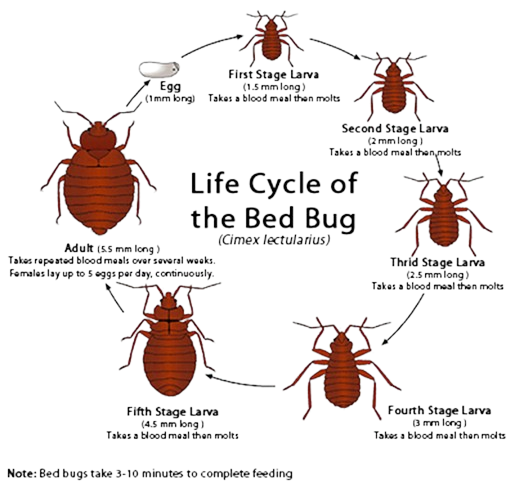
Understanding the Bed Bug: Life Cycle and Biology
Scientific Classification: Cimex lectularius Linnaeus
What Are Bed Bugs?
Bed bugs are small, six-legged insects ranging from mahogany to rusty brown in color. Adults are about a quarter inch in length, wingless, flat, and oval-shaped. After a meal of blood, they appear swollen and elongated. These pests are nimble runners, unable to jump or fly, and often gather in visible groups. Despite being detectable by the naked eye, their elusive nature makes them challenging to locate.
Feeding Habits of Bed Bugs
Primarily nocturnal, bed bugs prefer human hosts but will resort to other warm-blooded mammals in desperate situations. They remain hidden during the day in places such as mattress seams, baseboards, and behind wall fixtures, emerging at night lured by the carbon dioxide released from our breath. Bed bugs are attracted to body heat and carbon dioxide, not odors, positioning themselves within close proximity (four to eight feet) of their food source. They feed by piercing the skin with two hollow tubes, one injects numbing saliva, while the other draws blood. This feeding process lasts about 5-10 minutes. Post-feeding, they retreat to digest, mate, and lay eggs over 5-10 days.
Reproduction and Development
Eggs: Bed bug life begins as tiny, milky-white eggs, about 1 mm in length, laid in clusters using a glue-like substance. A female can lay 200-500 eggs during her lifespan of 10-12 months. Eggs hatch within 6-17 days, promoting rapid population growth if not controlled.
Nymphs: Upon hatching, nymphs are nearly invisible and start feeding immediately. They mature in 21-37 days over five developmental stages, requiring a blood meal at each stage to grow and shed their skins.
Adults: Adult bed bugs are about the size of an apple seed (5-7mm) and feed weekly. Their color deepens to a long, brown hue post-feeding, appearing balloon-like. Adults can live over 300 days with a consistent food supply, and can survive up to a year without feeding by entering a dormant state. An adult male can produce five generations during its life, contributing to a fast-growing infestation.
